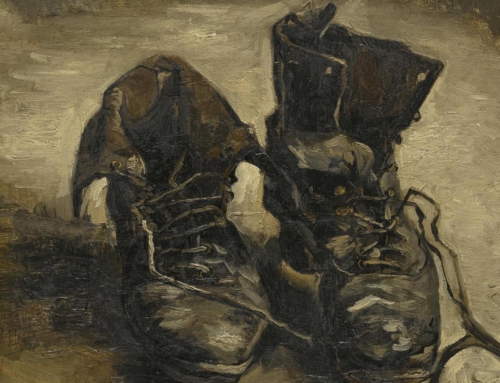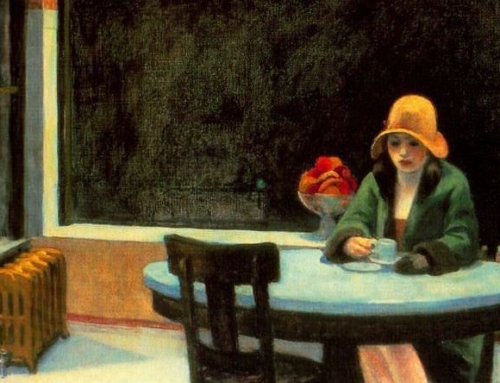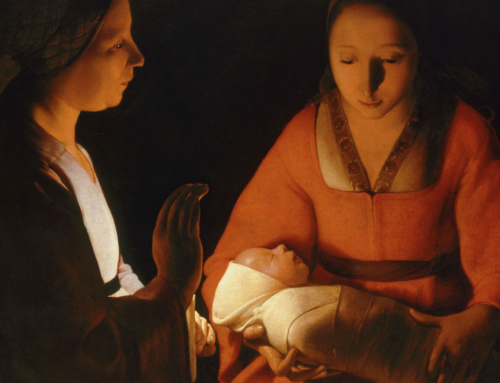Just a few weeks ago, a man approached me as I marched with my brothers and sisters up Constitution Avenue. “Hey! I was curious … who are you guys?”
Having commonly fielded this question, I answered, “We’re called Dominicans. We’re a religious order in the Catholic Church. You know, kind of like monks and nuns.” I could tell he was still confused. “Are you Catholic? Christian?” I asked.
“No,” he said.
It occurred to me that I should speak about that thing which uniquely marks a religious—his or her vows. I’m not sure why, but I started with the vow of chastity. “Well,” I said, “in the Church, since her foundation, there have been men and women who set themselves apart ‘for the sake of the Kingdom of Heaven.’ So, they don’t marry. They imitate Christ by …” I was immediately cut off.
“What?! You mean … you don’t, um, well, you don’t have children or a family or … But you are all so young and tall and … ” He trailed off, clearly flabbergasted. Pondering a moment, he asked, “But why??”
And like that, within a minute of meeting this stranger, I was talking to him about Jesus Christ—not because I had hunted him down or forced the topic, but because he had seen and approached this curious cohort of cape-wearing friars—a strange and unique cohort of signs in the midst of so many other signs and banners waving in the march that day.
In his 1996 post-synodal apostolic exhortation, Pope St. John Paul II speaks of what he calls the “sign value” in Christian consecrated life:
The sign value, which the Second Vatican Council acknowledges in the consecrated life, is expressed in prophetic witness to the primacy which God and the truths of the Gospel have in the Christian life. Because of this pre-eminence nothing can come before personal love of Christ and of the poor in whom he lives (84).
Three evangelical counsels form the border of this sign, which the pope says points to the primacy of God and the truths of the Gospel. Poverty preaches to a world wrapped up in wealth: “Sell all that you have and distribute to the poor, and you will have treasure in heaven” (Lk 18:22). Chastity champions purity in the midst of a sexualized society: “He who is able to receive this, let him receive it” (Mt 19:12). Obedience offers overtures against the litanies of unbounded liberty: “For I have come down from heaven, not to do my own will, but the will of him who sent me” (Jn 6:38).
And the message within these three remarkable borders is quite simply this: Jesus Christ.
When Mary and Joseph presented Jesus in the Temple, the righteous Simeon spoke to Mary: “Behold, this child is set for the fall and rising of many in Israel, and for a sign that is spoken against […] that thoughts out of many hearts may be revealed” (Lk 2:34-35). Jesus—dedicated to the Lord in poverty, chastity, and obedience—is the ultimate sign, which all religious imitate when they give themselves to God in vows.
We live in a world replete with signs directing us to pleasures which assure happiness. Highway billboards, dollar menus, Super Bowl commercials, pop-up ads, beer labels, newspaper ads, text messages, and tweets. In the past century, these signs have become increasingly creative, richly enhanced, and precisely calibrated using the latest psychological and marketing studies. Meanwhile, the visible sign of men and women in the consecrated life—and, with respect to celibacy, we could also include the diocesan clergy—remains largely unchanged and ever effective in capturing the imagination of a society otherwise inundated by signs. And this sign, pointing to Jesus, indicates to the only place where true happiness is found.
Last weekend, we simultaneously commemorated the Presentation along with the World Day for Consecrated Life. Last weekend, various men and women also made vows to the Lord, including four Dominican friars from our province. Let us thank God for these new signs of love in the world, and pray that they pique interest, capture imaginations, touch hearts, and point others to God.
✠
Photo by Joshua Earle







